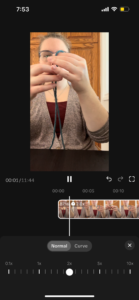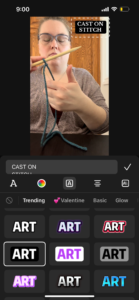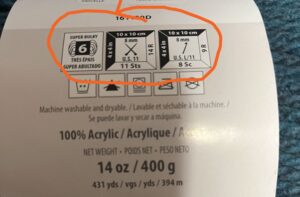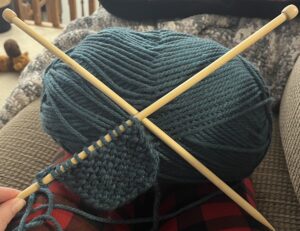Wow! It feels surreal to be writing my last learning project post for EDTC 300! It has definitely been quite the adventure learning how to knit from online sources only! The experience came with many moments of frustration but at the same time, many moments of pride for what I learned and what I accomplished. I enjoyed the opportunity to chose what I wanted to learn, the ability to guide my own learning journey and the opportunity to foster my creativity along the way! I want to send a huge THANK YOU to all of my fellow classmates who made this experience a great one! All your comments and words of encouragement as I went along was greatly appreciated! When I think back to the beginning of the semester, I never would of guessed that I’d be enjoying blogging so much (I was very hesitant at the beginning) or that I would have broken away from my comfort zone in so many ways – from expanding my skills beyond creating simple washcloths to becoming comfortable creating videos and everything in between.
Now lets take a look back and see how the various weekly learnings played out. Below is a breakdown of the learning project weeks and all I have accomplished.
Week One – The Knitting Chronicles
- Shared that I had no prior experience with knitting, I was starting from scratch
- Outlined my plans for the semester (I can proudly say I accomplished all of these goals throughout the weeks, especially goal of having fun)
- Figure out what size of needles and type of needles I prefer to use
- Experiment with different knitting stitches
- Learn about different types of yarns and their benefits
- Learn both continental and English style knitting technique
- Have Fun!
Week Two – Welp, Here Goes Nothing
- Learned from Sheep & Stitch
- Found out that bulky yarn and larger size needles are recommended for beginners
- Learned how to read yarn labels
- Learned how to:
- Cast On
- Knit Stitch
- Cast Off
- Created a logo for my knitting journey using Canva
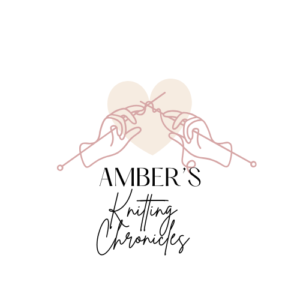
Photo by Canva
Week Three – TikTok Here I Come
- Focused on practicing the skills I learned the week prior (Cast On, Knit Stitch & Cast Off)
- Experienced a learning curve with creating a video on TikTok
- Continued my learning with uploading the video to YouTube in order to share the link on my blog post
Week Four – From Knits to Purls
- Found a video to give me tips on how to fix my tight stitches
- Used two sources to learn this week, Studio Knit & Love Crafts
- Explained the pros and cons of both sources
- Learned the Purl Stitch
- Stumbled upon information I didn’t realize I was missing in previous weeks about the Garter Stitch
- Created a video to show the difference between Knit and Purl Stitches.
Week Five – There is an App for That
- Explored the app Knitting Genius
- Critiqued the app
- Explained in detail the Row Counter function
Week Six – Continental vs. English Knitting. Say What?!?
- Learned from Handy Little Me
- Explored the differences and benefits of Continental vs. English Knitting
Week Seven – Mistake Rib Stitch : Who Said Mistakes Aren’t Possible?!?
- Switched my needles to smaller ones, 6 mm and went with a medium weight yarn
- Used two sources this week, The Yarnist & The Nervous Knitter. Both sources frustrated me and I went back to my ‘go to’ source, Sheep & Stitch
- Learned Mistake Rib Stitch
- Created video to show my explanation of Mistake Rib Stitch and where I went wrong the first time
Week Eight – Expanding my Repertoire with Nimble Needles
- Found a pattern for a knitted coaster that used a combination of knit and purl stitches
- My source for this week was Nimble Needles
- Tried to use medium weight cotton yarn, was unsuccessful and switched back to a medium weight acrylic yarn
Week Nine – My First Cup Cozy
- Learned how to knit in the round using curricular needles and a magic loop method
- Watched tutorial video by Mikaela Martens
- Knitted a cup cozy
- Supposed to be all in Stockinette Stitch but I messed up and half ended up being Purl Stitch
- Researched tips to help me improve for my next attempt at cup cozy
Week Ten – One Bubble Stitch at a Time
- Learned the Bubble Stitch
- Learned how to add in a second colour of yarn
- Source this week to learn from was Studio Knit (which I just realized as writing up this summary post that I used this source before. Oops!)
What I Learned from My Experience of Learning from Online Sources
- Learning online is kind of like putting together a puzzle.
- Sometimes the people you are learning from will assume you have background knowledge and leave out parts that might be important to know. This means you have to do some digging and utilize different sources to help you create the full picture
- Even if you really like one source, there is still great benefits in searching out a few others. You can learn from multiple sources at a time.
- There is an overwhelming amount of information available online to teach you and you have to weed through to find the ones that fits your style. It often takes some searching in order to find someone who you find is easy to learn from and that your learning style clicks with
- And most importantly I discovered, learning how to effectively learn from online sources is a skill that takes time to develop.
Final Thought
I will miss our EDTC 300 community, but I am sure our paths will cross again in future classes or maybe even in my future school placements! Thanks for following along and contributing to my learning journey! Have a great summer!
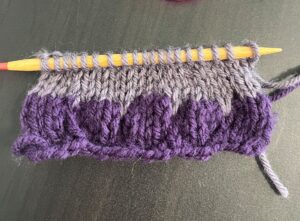 Hello EDTC 300! We are at week 10 of my knitting journey! Wow time has flown! This week I decided to have some fun with learning the ‘
Hello EDTC 300! We are at week 10 of my knitting journey! Wow time has flown! This week I decided to have some fun with learning the ‘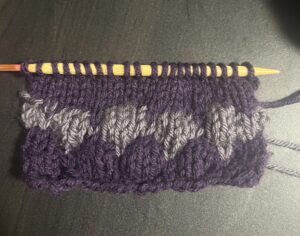 The source I was learning from this week was
The source I was learning from this week was 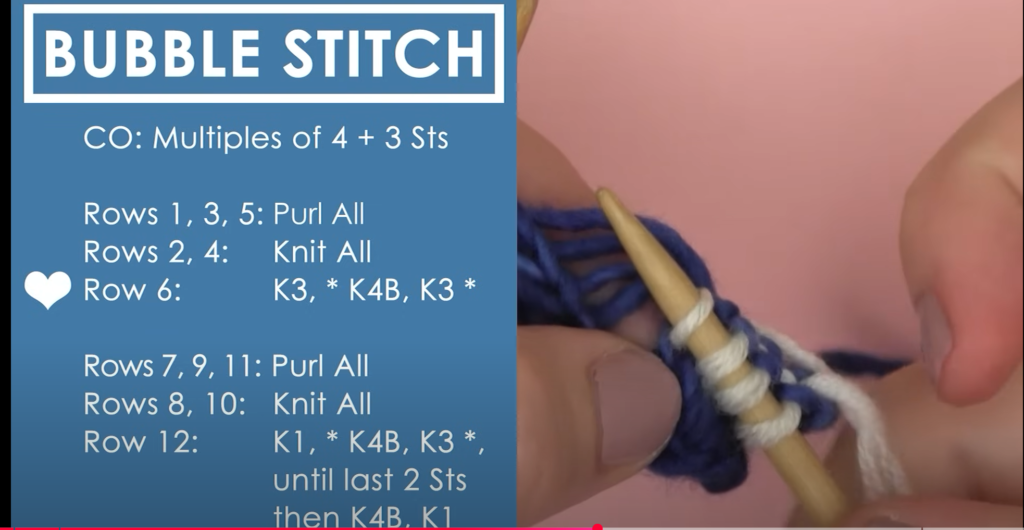
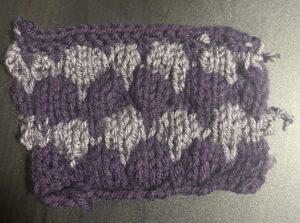
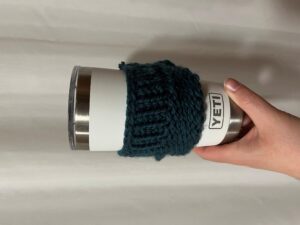 For this project I used 8 mm curricular knitting needles and a super bulky acrylic yarn. I found that as I was
For this project I used 8 mm curricular knitting needles and a super bulky acrylic yarn. I found that as I was 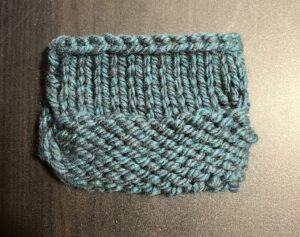
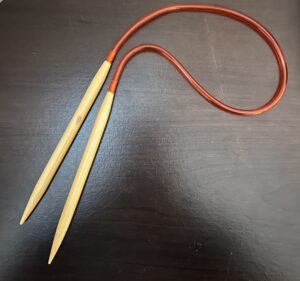
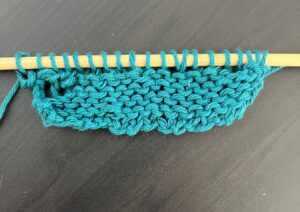
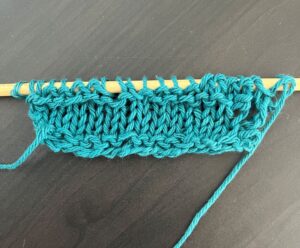 the cramps it was causing my hands. I was only able to do a few rows at best before my hands would start aching. Taking this into consideration, I made the decision to switch back to my purple acrylic yarn that is medium weight and easier on my hands to work with. In the future I will definitely try working with cotton yarn again but will maybe try a
the cramps it was causing my hands. I was only able to do a few rows at best before my hands would start aching. Taking this into consideration, I made the decision to switch back to my purple acrylic yarn that is medium weight and easier on my hands to work with. In the future I will definitely try working with cotton yarn again but will maybe try a 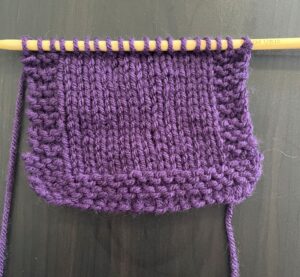
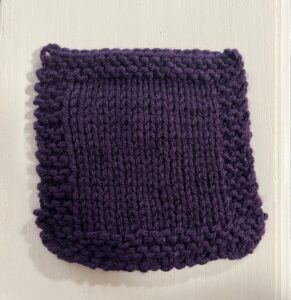
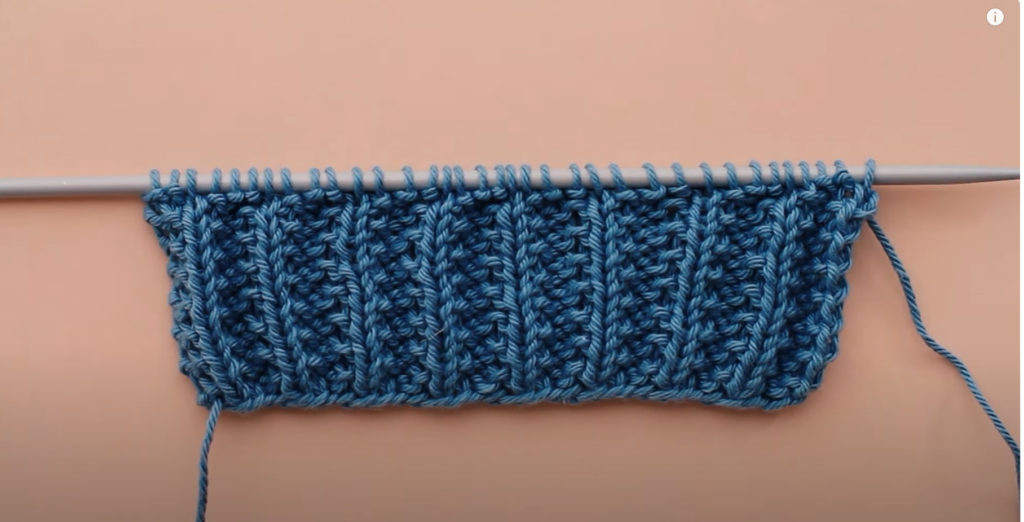
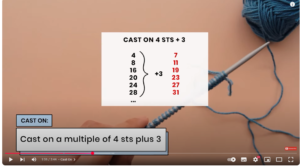
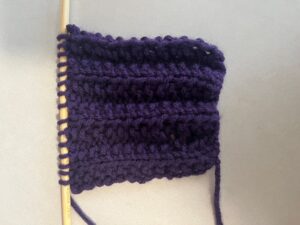
 As I have been going along this knitting journey, the one thing I noticed is that it is easy to lose track of how many rows you have knit. I found this particularly hard when doing the stocking stitch last week, where I had to alternate one row purl, one row knit. At one point I got distracted at the end of the row and then couldn’t remember if I had done purl or knit for that row. I thought, I can’t be the only one having this problem, there has to be some kind of knitting tool available to help! Luckily, in my search I stumbled upon
As I have been going along this knitting journey, the one thing I noticed is that it is easy to lose track of how many rows you have knit. I found this particularly hard when doing the stocking stitch last week, where I had to alternate one row purl, one row knit. At one point I got distracted at the end of the row and then couldn’t remember if I had done purl or knit for that row. I thought, I can’t be the only one having this problem, there has to be some kind of knitting tool available to help! Luckily, in my search I stumbled upon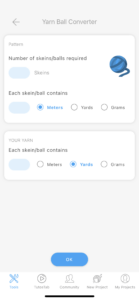


 Now that I have told you about the various functions and what I didn’t like about the app, I am excited to share that I was happy with the row counter function. Which, in reality, was the tool I set out to find anyway! Once I clicked on the row counter, I was able to name my project (in case you have multiple projects happening at once) and then chose whether I was knitting, crocheting, using a machine or using a loom. Once the basic counter was setup, I was able to modify and create two counters. One counter for my knit rows and one for my purl rows. I can switch between the two counters fairly easily by clicking on the button in the upper right corner that says “Part 1” or “Part 2” depending on which counter I am on. I was also able to label the counters “Knit” and “Purl” so that I don’t get confused. A few other handy functions I noticed was “Voice Control”. When activated, this allows you to say the word “Next” and the counter will automatically increase your count by one. This would be convenient if you don’t want to put your knitting down to press the buttons. Another function available was a timer that you can use to time how long it is taking you to do each row. That doesn’t sound very beneficial to me, as I like to be relaxed while knitting and not worried about the time it is taking me, but I am sure some people would use it.
Now that I have told you about the various functions and what I didn’t like about the app, I am excited to share that I was happy with the row counter function. Which, in reality, was the tool I set out to find anyway! Once I clicked on the row counter, I was able to name my project (in case you have multiple projects happening at once) and then chose whether I was knitting, crocheting, using a machine or using a loom. Once the basic counter was setup, I was able to modify and create two counters. One counter for my knit rows and one for my purl rows. I can switch between the two counters fairly easily by clicking on the button in the upper right corner that says “Part 1” or “Part 2” depending on which counter I am on. I was also able to label the counters “Knit” and “Purl” so that I don’t get confused. A few other handy functions I noticed was “Voice Control”. When activated, this allows you to say the word “Next” and the counter will automatically increase your count by one. This would be convenient if you don’t want to put your knitting down to press the buttons. Another function available was a timer that you can use to time how long it is taking you to do each row. That doesn’t sound very beneficial to me, as I like to be relaxed while knitting and not worried about the time it is taking me, but I am sure some people would use it.
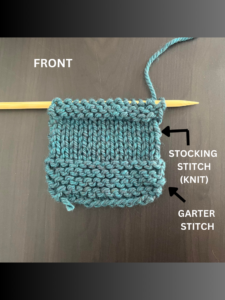 This week I decided to learn the purl stitch as when I was researching different knitting stiches, Sheep and Stitch mentioned that
This week I decided to learn the purl stitch as when I was researching different knitting stiches, Sheep and Stitch mentioned that 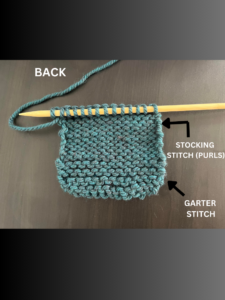 Also, I think it is important to note that while I was practicing the purl stitch I stumbled upon a piece of information I didn’t realize I was missing. I was practicing my purl stitch, row after row, and when I looked at what I was creating I realized it looked the exact same as my previous dishcloth I had made. This left me confused and wondering if I was doing the technique wrong. After some researching, I discovered that since knit and purl stitches are exact opposites of each other when
Also, I think it is important to note that while I was practicing the purl stitch I stumbled upon a piece of information I didn’t realize I was missing. I was practicing my purl stitch, row after row, and when I looked at what I was creating I realized it looked the exact same as my previous dishcloth I had made. This left me confused and wondering if I was doing the technique wrong. After some researching, I discovered that since knit and purl stitches are exact opposites of each other when 